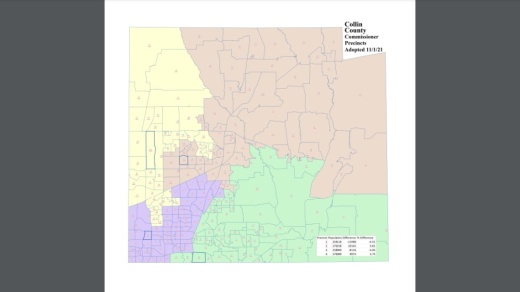The new district boundaries will be effective Jan. 1, according to County Administrator Bill Bilyeu.
Bilyeu said that Collin County was required to redraw district lines after data from the 2020 decennial census indicated high population growth. According to the census, Collin County’s population jumped by about 36% between 2010 and 2020, from 782,341 to just over 1.06 million.
“We're in a great spot here,” Bilyeu said. “We've got such expanding growth, and so therefore, we have to draw [new] lines.”
Collin County had to establish boundaries with at most a 10% gap between the highest and lowest population-dense precincts. For instance, if one precinct is 6% higher than the rest, the lowest another precinct could be is 4% from the rest.
Precinct 2, represented by Commissioner Cheryl Williams, is the most populous out of the four precincts with 276,258 residents, according to the redrawn map. Williams’ precinct covers a wide stretch of land in southern Collin County.
The least densely populated precinct is Precinct 1, represented by Commissioner Susan Fletcher, with 254,118 residents. Fletcher’s precinct covers a northwestern stretch of Collin County.
Commissioner Darrell Hale, who said he drew a majority of the considered maps, said the county may have to redraw lines in five years, or mid-census cycle. High growth in the county’s northern region was heavily considered in the meeting by commissioners, who anticipate more residents moving to that region of the county.
“In an ideal dream, all of them will be identical,” Bilyeu said. “We look at it differently in Collin County because of our incredible growth, especially the growth on the north side of the county.”
Bilyeu said Collin County is “very diversified” across the community, and has a relatively even distribution of minority communities.
“We've got a good diversity in all the communities in the county, which is great,” he said.





